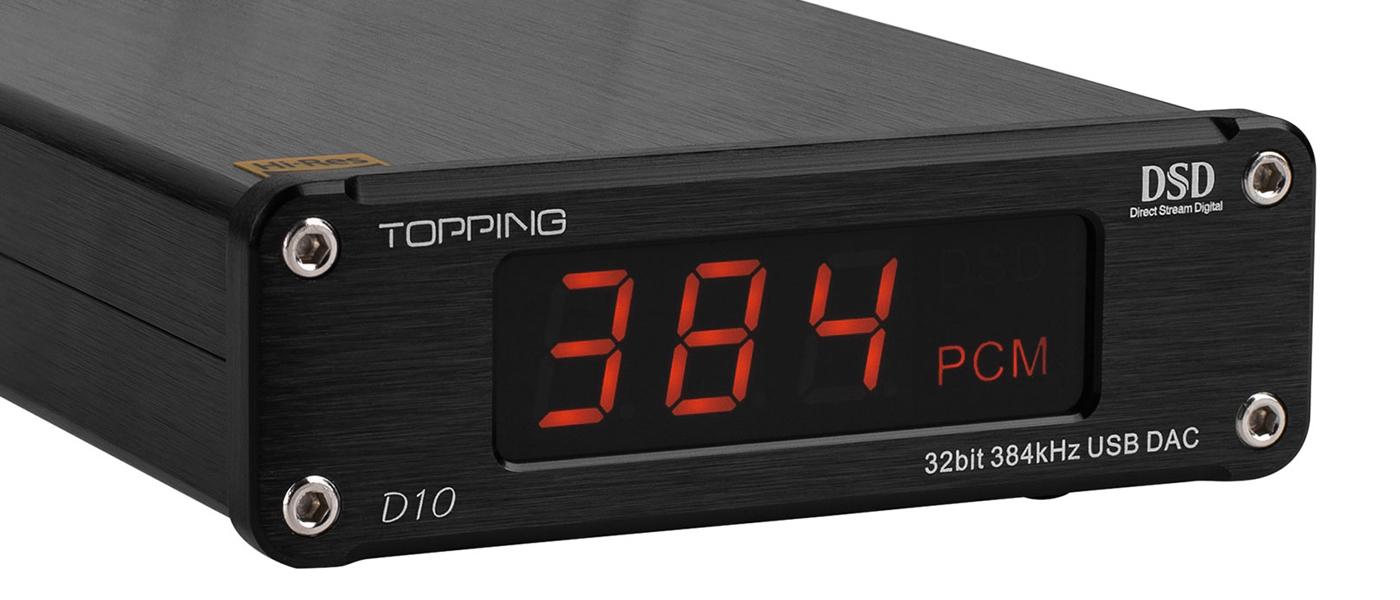The Denafrips Aries II DAC is not a product you can buy from your local Best Buy or from anywhere else in the United States since there are no U.S. dealers. The Aries II DAC is an R2R or ladder DAC that uses laser-trimmed resistors to do its digital to analog conversion. Most other DACs use a conversion architecture called Delta-Sigma modulation. The R2R conversion method is generally thought to produce better sound, but the claim is, as yet, still in dispute.
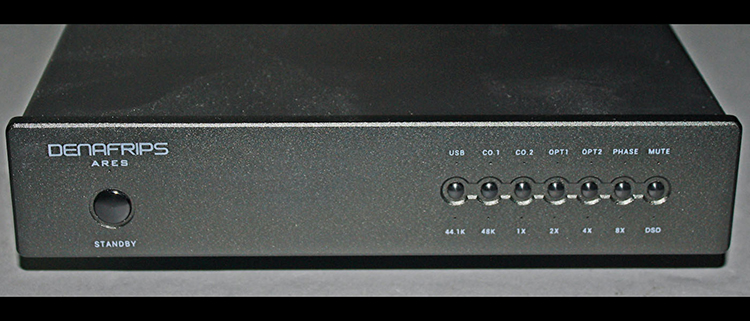
Denafrips Ares II DAC
- Available only direct from Denafrips in Singapore
- R2R technology claims to offer better sound
- There are no preamps or headphone amps here – just the DAC
- Foreign customer support / domestic service
- High price for a consumer DAC, but low for a high-end product
- Available in black only
- Unbalanced (RCA) and balanced (XLR) analog outputs
- Well-reviewed by multiple internet posters
I ordered my Denafrips Ares II DAC just after the internet hype-engine began extolling what a great bargain it was for its nearly-unbeatable sound quality. Of course, since there is no U.S. distributor, I had to order directly from Denafrips in Singapore. But thanks to the ubiquitous currency exchange machine that is PayPal, this was not a huge issue.
Secrets Sponsor
The Denafrips Ares II DAC was, of course, backordered. My order was for the original Ares, but I received a “Congratulations! We’re sending you the Ares II instead.” email. And so, after another modest wait, my Ares II arrived, but with the original Ares faceplate. An inspection of the motherboard confirmed that my model was indeed an Ares II. Upon opening the box, there was no owner’s manual, and no information at all in English. The cards, shown below, were the only enclosures.

The setup, fortunately for me, was intuitive. Plug everything in, select the source via pushbutton, and voila! Music.
The LEDs on the front panel, however, are recessed behind the faceplate, and seeing them is easier from across the room than when seated in close proximity to the DAC. Since there is no volume control, be sure to turn down your preamplifier or integrated amp prior to starting any music feed. In other words, you need a line-level volume control device downstream of the Ares II. The DAC quickly locks onto any incoming digital signal without delays or clicks, up-samples without needing any prompting, and is essentially plug-and-play.
Digital formats:
DSD, PCM
Sampling modes:
Oversampling / Native sample rate
Analog outputs:
Unbalanced (RCA) & Balanced (XLR)
Frequency response:
20-70kHz +/- 3dB
THD + noise:
0.004%
S/N ratio:
115dB
Dynamic range:
>119dB
Digital inputs:
(1) Optical TOSLINK
(2) S/PDIF coaxial
(1) USB
Dimensions:
8.25” wide x 9.25” deep (not including jacks) x 2.5 inches tall
Weight:
7.8 pounds
MSRP:
$680 U.S.
Color:
Black
Warranty:
36 months
Company:
SECRETS Tags:
DAC, Denafrips, Ares II, DAC Review 2019
The Denafrips Ares II’s sound quality is, like many other DACs, affected by what components it interacts with rather than having a personality of its own. Placed into a compatible system, the Denafrips Ares II DAC can sound clean and detailed with excellent dynamics. Placed into a less-compatible system, you might get better sound from a computer-grade Asus Xonar essence ST sound card (~$275) or even a pro-audio Behringer UCA 202 (~$30). But both of those options use conventional Delta-Sigma DACs, not R2R technology.
Secrets Sponsor
The main competitor of the Denafrips Ares DAC that I have heard would likely have to be the Schiit Audio Gumby (technically, the Schiit Gungnir, Multi-bit). Having owned both the Gumby and now the Denafrips, I find them roughly equal. But the Denafrips Ares II, for $680, beats the Gumby ($1,249) in price.
The technology of R2R DACs is detailed in-depth on many online venues including Wikipedia. Basically, a ladder DAC is a sequentially arranged set of resistors that turns binary signals into an analog output voltage. It works by the principle of superposition where switching on additional binary inputs adds more voltage at the output.

For this technology to work, the ladders must have incredibly-accurate resistors. This is typically accomplished with surface-mount resistors that are laser-trimmed to produce exactly the resistance needed.
The DAC also has well-labeled and easy-to-find inputs:

And now, we come to the crux of the matter… How does the Denafrips Ares II DAC sound?
And the answer, not meaning to be coy about it, is, “it depends.” In my system, and to my ears, the Denafrips Ares II DID sound different from the Sabre DAC built into my OPPO UDP-205 player. The Sabre has a slightly rising treble that, while occasionally irritating, can usually be ameliorated through slight amounts of speaker repositioning (in this case, toe-in or toe-out). The Denafrips Ares II DAC sounded more edgy and crisp than the Sabre. Its sound maintained that characteristic despite volume changes, speaker positioning changes, or even the use of different speakers.

Some will welcome the greater detail of the Denafrips, but others will likely find the sound somewhat bright. If your system has any propensity to sound bright or edgy to begin with, the Ares II will likely exacerbate that.
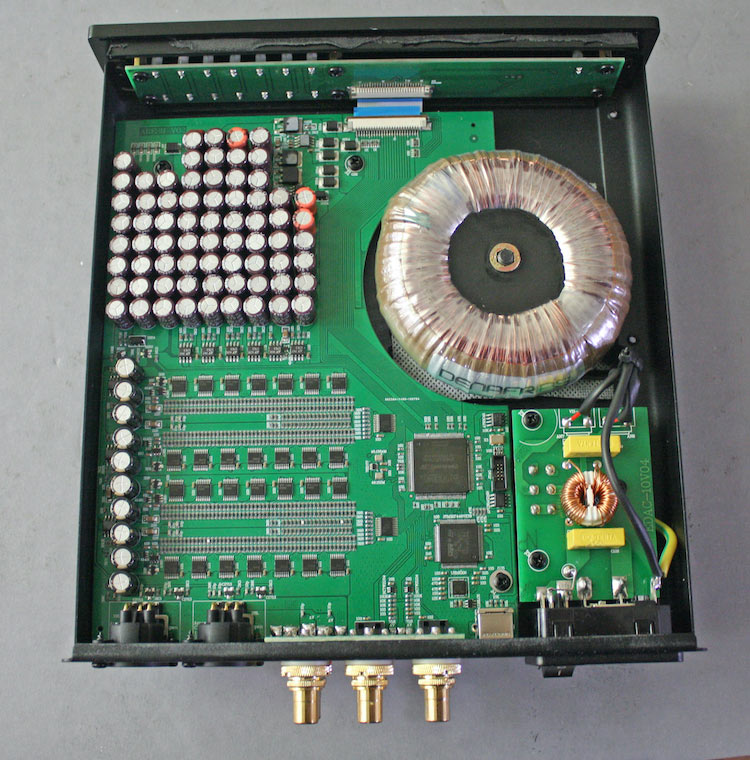
Now in a different system, I could easily see how one or the other of the two DACs might be a head-and-shoulders winner. But my system (unlike anyone else’s, I’m sure) may not be as kind to the R2R sound as other systems. My system currently consists of the following:
- HP Windows-10 laptop with jRiver Media Center 25
- Outboard Seagate 4TB USB data drive
- Audioquest USB cable
- Denafrips Ares DAC
- Balanced interconnects to an Audio GD preamplifier
- Balanced interconnects to a JL Audio CR-2 crossover
- Balanced interconnects to a pair of Emotiva PA-1 power amps
- Canare 12-foot bi-wire cables to:
- Klipsch RP600m bookshelf loudspeakers or
- Emotiva T2 8” tower loudspeakers or
- Vintage DCM Time Frame 400 loudspeakers
- Ixos unbalanced interconnects to four subwoofers
- OPPO UDP-205 player (not used in this review except for comparison purposes)
A variety of music was used to evaluate the Denafrips Ares II DAC including:

The cut “Caroling, Caroling” from the Singers Unlimited Christmas album is one of my favorite test tracks. The singers should be spread out on a stage between the speakers and both the OPPO and the Denafrips DACs delivered the goods equally. If I had to give an edge to either, the Denafrips soundstage might (but only might) have been slightly more expansive.

The “Soy Yo” track from the Amencer album is one of my all-time favorites for showing the effects of out-of-phase information. The drums should appear to be on both sides of the listener if not partially behind. In fact, if you want to know whether your room is acoustically symmetrical from side to side, this is the track to use! On this track, I’d throw the prize to the Sabre DAC in the OPPO, but only barely. In fact, both DACs did a fine job on this, but the Sabre just seemed to have slightly more separation.
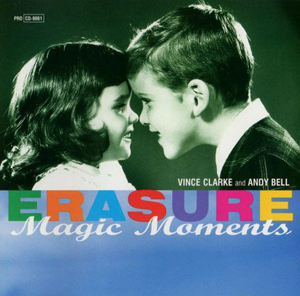
This synth-cover of an old Perry Como song is so bubbly, it’ll be an ear-worm you’ll have trouble kicking out. The only reason I include it in this mix is because it’s a fine tool for setting subwoofer & satellite levels. It will also show any non-linearities in a DAC’s bass response. Both DACs acquitted themselves perfectly with this cut. Now if I could just get the song out of my head! LOL
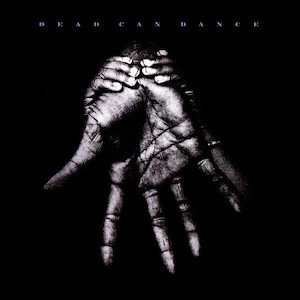
Of course, the classic Yulunga (Spirit Dance) should open a listening space that transports you from your listening room to somewhere totally different. It’s an excellent DAC test to see if the spaciousness that should be there is really there. Although both DACs did open the listening room with walls-peel-away verisimilitude, the edge, this time, must go to the Denafrips Ares II.
The cut “How Fortunate The Man With None” is very good for evaluating voice. Both the Denafrips and the OPPO’s Sabre nailed this perfectly, so a tie on this song.

There are SO many good tracks on this album, it’s hard to pick. But my favorites here include “Somewhere, Somebody,” “Way Down Deep,” “The Hunter,” and of course, the classic “Lights of Louisiane.” The crickets and background ambiance of that last track listed should tell you just how good your system is (or isn’t). The Denafrips Ares DAC pops those ambient
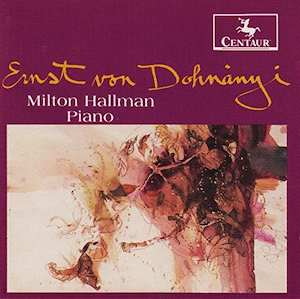
This Milton Hallman performance of Ernst Von Dohnanyi keyboard favorites gives lie once and for all to the claim that vinyl has superior dynamics to CD. The piano is clean, and both DACs present the full range of the keyboard without peaks, dips, or any noticeable artifacts. Mr. Hallman’s playing is impossible to criticize, and the entire disc is a joy to listen to.
I had to listen to several of the tracks multiple times because I kept forgetting to take notes due to excessive enjoyment of the music. While the OPPO’s Sabre DAC made the piano sound slightly more mellow (think of a Bosendorfer vs. a Steinway), the Denafrips Ares II was definitely in the bright and clean camp, better conveying the Hamburg Steinway sound. The Centaur Records recording is one of the best I’ve heard (as are all other Centaur recordings). So, based on this recording, I’d have to say that the Denafrips Ares II DAC may be the more tonally-accurate of the two. But once again – the difference isn’t great.
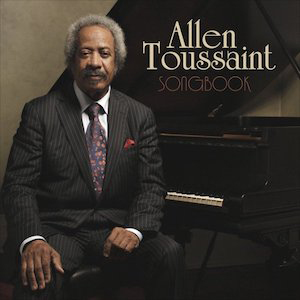
The tracks “Soul Sister” and “It’s A New Orleans Thing” put Allen and his piano in your room, directly between your speakers, and LIVE. Use these tracks to evaluate soundstage, vocal purity, dynamics, and audience applause. If any of these sound unnatural, your system has problems. Both the Denafrips Ares II and the OPPO 205 took this CD to the bank.
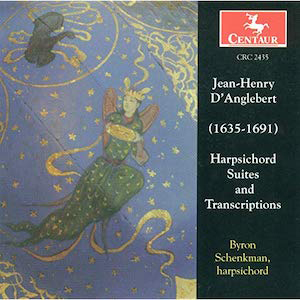
This wonderful harpsichord disc, played by Byron Schenkman and recorded on the amazing Centaur label (CRC-2435), is one of the most vivid harpsichord recordings I’ve ever heard. The instrument should appear to be not only in the room with you and between the speakers, but there should be sufficient spatial clues that you can actually hear the harmonics of the instrument.
Many harpsichord recordings that I’ve heard make the instrument sound like a toy piano – tinkly… But the Centaur recording catches well the sound of the cabinet, the soundboard, and the sympathetic string resonances. This is one of the most harmonically-rich recordings I’ve yet heard of a harpsichord. Now does the recording convey the sound of the original venue? I’ve no way of knowing since I’ve never been there, but the sound sure doesn’t sound like my living room! Both DACs do a great job with this material, although I could criticize both DACs for sounding slightly bright.

This is yet another masterful Centaur recording (are we seeing a pattern here?), with two viola de gambas and a harpsichord. The CRC-2429 disc is a thing of joy. Once again, this recording was made in the Pony Tracks Ranch in Portola Valley, CA. Lovely music, wonderfully performed and most excellently recorded.
Both DACs did a fine job with this material, both were slightly bright, but in this recording the slight edge of the Denafrips Ares II added some depth to the soundstage that the OPPO’s Sabre DAC didn’t seem to catch. Is the depth truly on the recording, or is it an artifact of the Ares II DAC? I can’t say for sure, but the sound is definitely striking to listen to.
And ultimately, the DAC differences on this recording bring up what is potentially one of the most perplexing questions to be had: Is the extra depth that I’m hearing from the Ares II DAC something that is truly on the recording, or is it a pleasant distortion induced by the Ares? In other words, which of the two DACs is truer to the information on the CD? There’s no way to know! If the Ares II is creating the artifact of artificial depth, then, in theory, that artifact should be audible on every piece of music converted by the Ares II. But it could be possible that such an effect could occur only on recordings with emphasis on certain parts of the frequency spectrum, only on recordings with specific phase information between channels, or only on recordings that somehow (specific harmonics?) cause the DAC to display the added-depth behavior.
Since I’m unable to analyze such issues, I can only relay what I hear. Looking back on my listening notes, I see that almost every time I noted soundstage differences, it was the Ares II that provided more. Does that prove that the Ares II is providing added soundstage that isn’t on the discs, or does it prove that the ambiance was on the discs and that the Sabre wasn’t reproducing it while the Ares II was? Enquiring minds want to know…
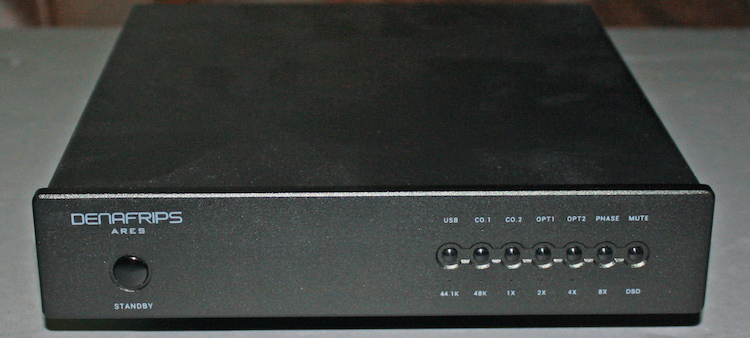
THE DENAFRIPS ARES II DAC does not light my fire despite its internet buzz, but don’t let that interfere with your evaluation.
- A straightforward tool for the job
- No bells and whistles (preamp, headphone amp, etc.)
- Great soundstaging
- An owner’s manual
- A registration card in English
- Specs on output impedance and current capability
- A way to audition prior to purchase
- A more-visible power LED
What is my preference between the two DACs? Do I prefer the OPPO UDP-205 with the Sabre Delta-Sigma DAC or the Denafrips Ares II DAC with its R2R architecture? – To me, it’s quite literally a toss-up. I realize this won’t be a popular conclusion since the DACs do sound different from one another, but I could easily live with either
There is no question that the Sabre DAC in the OPPO is a fine-sounding implementation of the Delta-Sigma family of DACs. This wasn’t my initial impression, but over time, I’ve come to appreciate the OPPO’s DAC for its many virtues and despite its slightly enthusiastic upper midrange to lower treble.
But in the area of soundstaging, I think that the Denafrips Ares II DAC has the (very slight) advantage. But that advantage comes at the price of a somewhat more edgy treble that, to some listeners, will be a deciding negative.
Another important question is, “Is the Denafrips Ares II worth its $680 price?” My answer to that is:
- IF the Ares II is a good match to the rest of your equipment,
- IF you consider $680 a reasonable price to invest in a DAC, and
- IF your ears appreciate soundstaging more than treble smoothness,
Then yes – this could be the DAC for you.
So, what about all those internet raves about the Denafrips? Am I right and are they wrong? Not at all! As I mentioned before, DACs just seem to be more dependent on their associated equipment than just about any other component. But of course, this situation precedes a broader question:
Your specific equipment list will never match any reviewer’s equipment. Does this mean that neither my or anybody else’s review will ever apply to your system? And the startling answer is “yes – reviews can never be accurate as they apply to your gear.” But that doesn’t mean that the reviews can’t be useful. There’s a difference between accuracy and utility.
I had a coworker once who was consistently infuriated by the local newspaper’s movie critic. He disagreed with every one of the critic’s reviews. But he finally realized that although the movie reviews weren’t accurate (in harmony with his preferences), they were still highly useful. If the critic loved a show, my coworker knew that he’d hate it, and vice versa.
Now the alignment between an audio review and your personal preference need not be diametrically opposed to still be useful. Once you’ve read enough of an audio reviewer’s work to learn their sonic preferences, then you can decide for yourself how closely your opinions and the reviewer’s align. Then, provided the reviewer is consistent, you can decide for yourself, using your knowledge of where your preferences align and where they don’t, how to interpret the information given.
In my system, the Denafrips just wasn’t a superstar (but then, neither was the Schiit Gungnir multibit). Is my system just allergic to R2R DACs? It’s definitely possible. But the more important question would be “Is the Denafrips Ares II right for you?”
And the only way to answer that question will be to listen in your own system with your own ears. The Ares II is most definitely not a bad DAC, but whether it’s a really good one (or even an amazing one) will depend most heavily on the rest of your system, your sonic preferences, and your personal cost-to-benefit ratio.


